The village down a quiet country lane with a ford and pub that's just been named poshest place to live

This charming little village feels like it's in a hidden valley all of its own. With a population of just under 750 (which has been largely unchanged in ten years), driving down the long, narrow road to Llancarfan feels a little bit like a step back in time.
Usually, when you go somewhere to write an article about what it's like to live there, you start by asking the first person you see on the street. In Llancarfan, there's a decent chance you won't see anyone. Wandering down Llancarfan's unnamed main road, where lush green grass coats the steep hills to one side, it feels like a quiet and idyllic parallel universe — one that's just been named in a list of the 48 poshest places to live in Britain.
A stream, Nant Llancarfan, crosses the road. There's a haphazard little collection of small bridges nipping back and forth across the water. Houses sit perfectly on the banks, with perfectly kept front lawns looking like they'd spill over into the river if it wasn't for the fences keeping them in place.
READ MORE: 16 lost chocolate bars we miss from the shelves and want back
READ MORE: 11 things you saw at McDonald's in the 1990s that would blow minds today
We do eventually spot somebody walking around - Ian Fell, who has lived in the village for 25 years ("to my astonishment," he says) after moving from Yorkshire. "I'm an economic migrant," he told us in 2023. "I came here for a job in Cardiff."
Ian lives in a disused and refurbished chapel at the top of a hill on the village's western edge. He said: "It's 200 years old and closed in about 1950, and was taken over by an artist who sold it to an architect who adapted it very sensitively. It's only had about four families in it [since then]. Where I came from was rural [too]. Llancarfan is a great, supportive community. I don't think there's a village kid who hasn't worked behind the bar in the Fox and Hound as part of their training!"
Life in the village — just north of Rhoose, to the west of Barry and a ways east of St Athan — has had its hiccups and Ian remembers the upset when the village school was closed, saying: "We used to love hearing the kids doing their rural learning and playing with the ducks in the stream."
But the village retained huge character, he told us, through its "iconic speciality" - the church wall paintings, which he said were "absolutely fascinating."

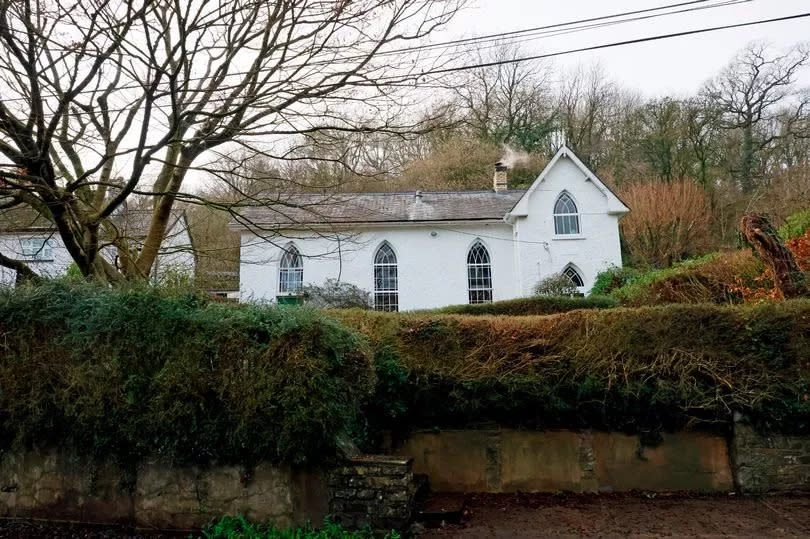


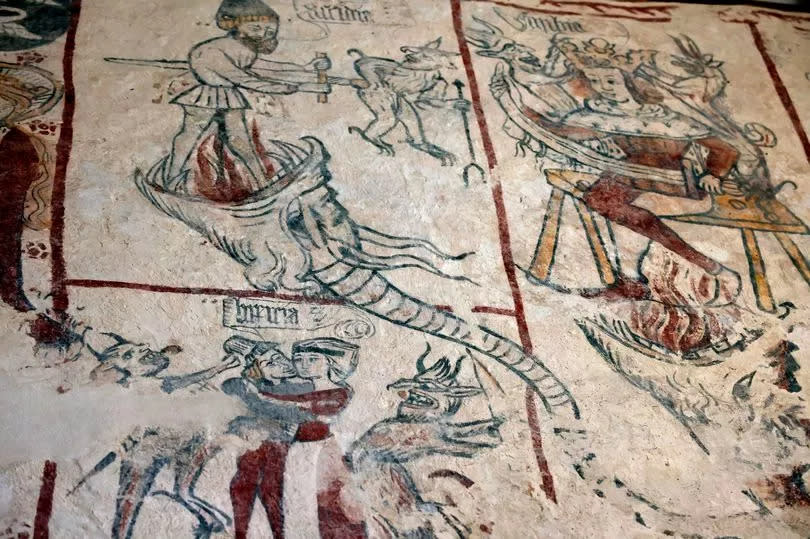
St Cadoc's Church, originating in the 12th century and presumed to be on the site of the original monastery founded by the Welsh saint, sits almost on its own in the middle of the village, with the Fox and Hounds pub and the village hall (which we're assured functions as a fully-working cinema) keeping a comfortable distance on either side of the graveyard.
Inside, intricate carvings and paintings which have been restored in recent years, depict the Seven Deadly Sins, St George, and images of death. The guestbook is signed by visitors from Kentucky, Kent, Long Island, Sydney, Ontario, Florida, London, Venice, western France, Wisconsin, Liverpool, Vancouver and Sydney again (with one visitor marking their second journey to the church).
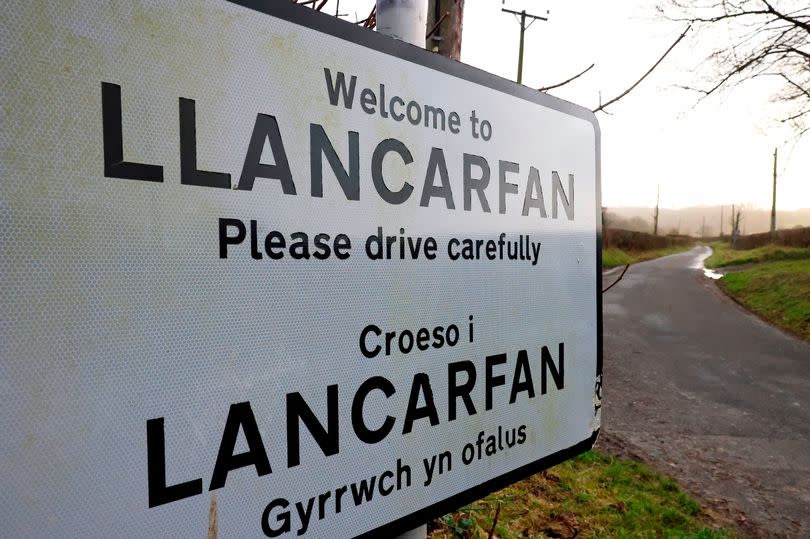

Llancarfan, it turns out, is something of a tourist destination - and St Cadoc's Church is one of the main attractions. Father Kevin Barry, who we meet on the edge of the graveyard and who works under Father Michael John in the Church in Wales' East Vale Ministry Area, explained why.
"This is a lovely village, especially with the church, which draws visitors from all around the world. It has a strong community feel, whether that's in the pub or the church. People who live here are from all over the place, England and Scotland as well as Wales. It's a great place for kids to grow up. A lot of people have lived here since they were children.
"Being cut off from public transport makes it difficult for elderly people, and people who don't drive, but there is a good taxi service and the school buses come here. Lots of people live here and commute to Cardiff." Find out about the latest events in Wales by signing up to our What's On newsletter here


The story across the UK is that little, picturesque villages like Llancarfan often get overtaken by a desire to expand and become commuter suburbs for bigger cities. But Father Kevin said Llancarfan had resisted this: "The infrastructure for more houses isn't here," he explained, "there are no shops and [not enough] public transport.
But he added: "We're very welcoming to new people." The church is a big part of this, and Father Kevin said being part of the East Vale Ministry Area helped to keep the church well-resourced, despite sometimes getting a congregation of just 15 or 16 people.


A stone's throw from the church, we then meet the team at the Fox and Hounds - a pub that's been known for its great food for years. Landlords Andrew and Julie took over in October 2022 and re-opened the pub in November, and the new team of chefs couldn't be happier with the community they've landed in.
"I used to work in St Athan and Cowbridge," said Michael, one of the chefs, "and until I applied for this job, I'd never been to Llancarfan. Llancarfan is quite a lot smaller, it's a family-oriented community and we have been able to feel part of that community. It's probably the most happy I've been in a job."
His colleague Andrew outlined the process of learning what local people wanted to eat in a local pub: "We come out during and after our shifts to speak to people and get feedback on what they're eating. The community have given us useful, constructive feedback - it's just gone really well.
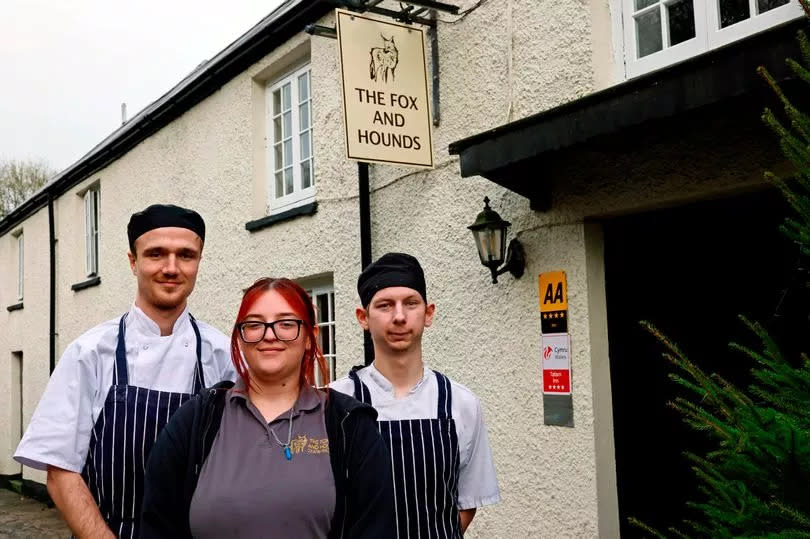
"Julie and Andrew have made us really welcome, everything we've needed they've got for us. The village has been very supportive."
Behind the bar, Chloe, who's worked there for three years and has recently moved to the village to live above the pub, told us: "It’s quite nice here, it’s really quiet. There’s not many people here but all the locals are lovely.
"It’s really nice to take a walk around, you’re not surrounded by people and you barely hear any cars. It’s out of the way but it is also a destination. People come here as a destination, for a holiday - sometimes if they have family here but we’ve had people from Canada recently coming here just on holiday."


To one side of the bar is a fireplace - sadly not lit on our visit, but Chloe reassured us: "When the fire gets lit, it gets very hot very quickly and it’s very peaceful to have a drink by the fireplace. It was so nice seeing the Christmas tree and the fire together last month."
Llancarfan is definitely a destination - not just for holidaymakers, religious pilgrimages and history enthusiasts looking for St Cadoc's, but also for people looking to buy a lovely house in the countryside. Over the years, some stunning houses have gone up for sale in and around the village.


Cliff House, for instance, went on sale in 2022 with a guide price of £1.5m, with an incredible garden and a huge conservatory. The thatched stone cottage was built in the 18th century as a working farmhouse, and achieved a Grade II listing from Cadw in 1995 for being 'a good example of a picturesque, thatched C18 farmhouse with surviving features and well preserved C19 additions'.
Similarly breathtaking is Pen Onn Grange, a house with a Georgian facade and period features that still has a modern edge to it thanks to a wraparound terrace. The house, on the outskirts of Llancarfan, went up for sale in 2022.
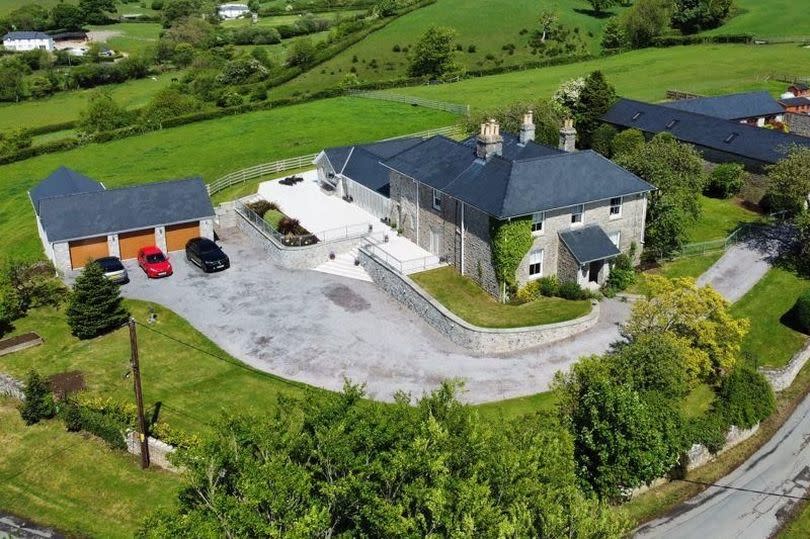

There are so many perfect little villages dotted around Wales, and they'd all make lovely homes - but there's definitely something special about Llancarfan.

 Yahoo News
Yahoo News 
